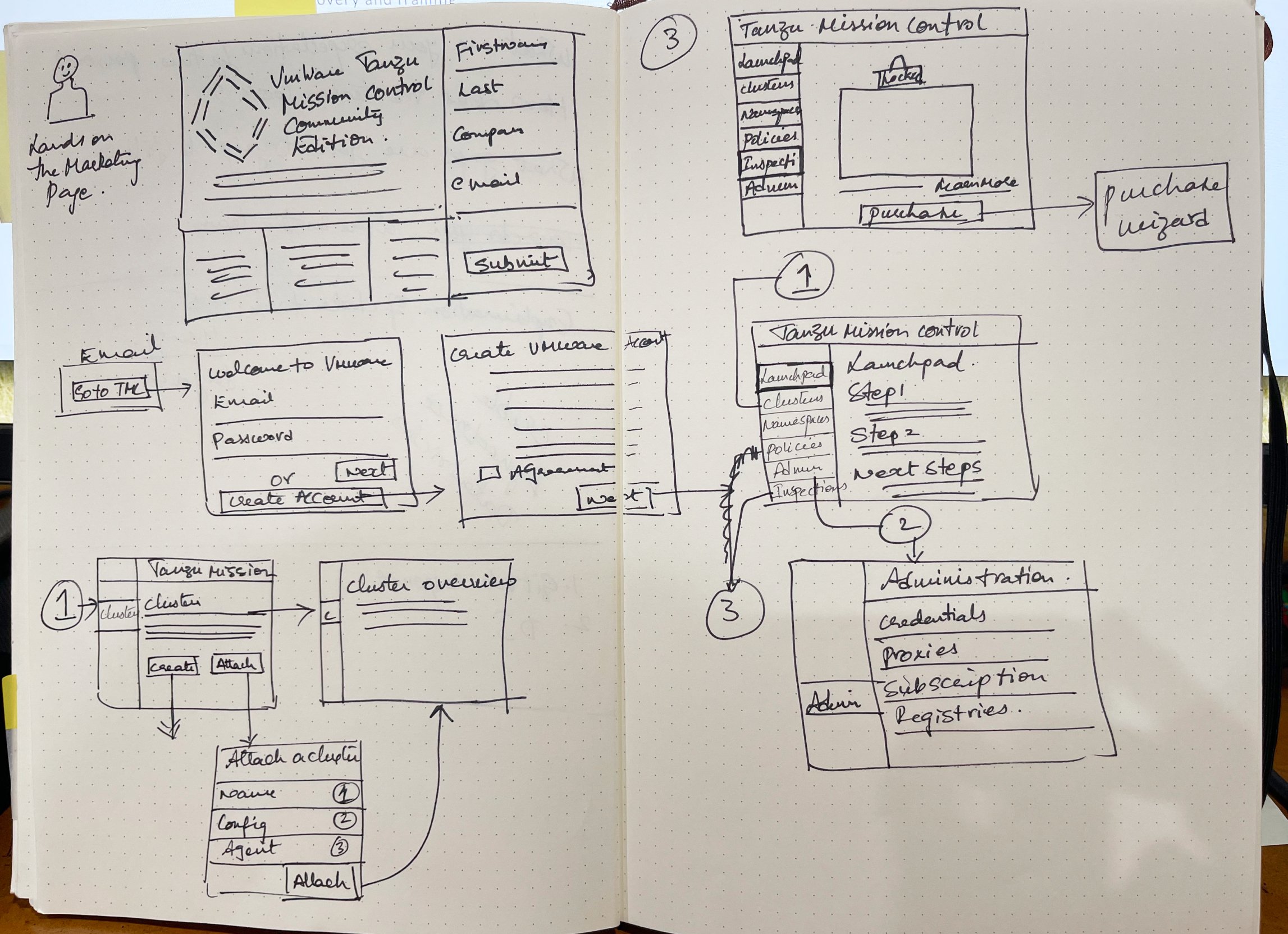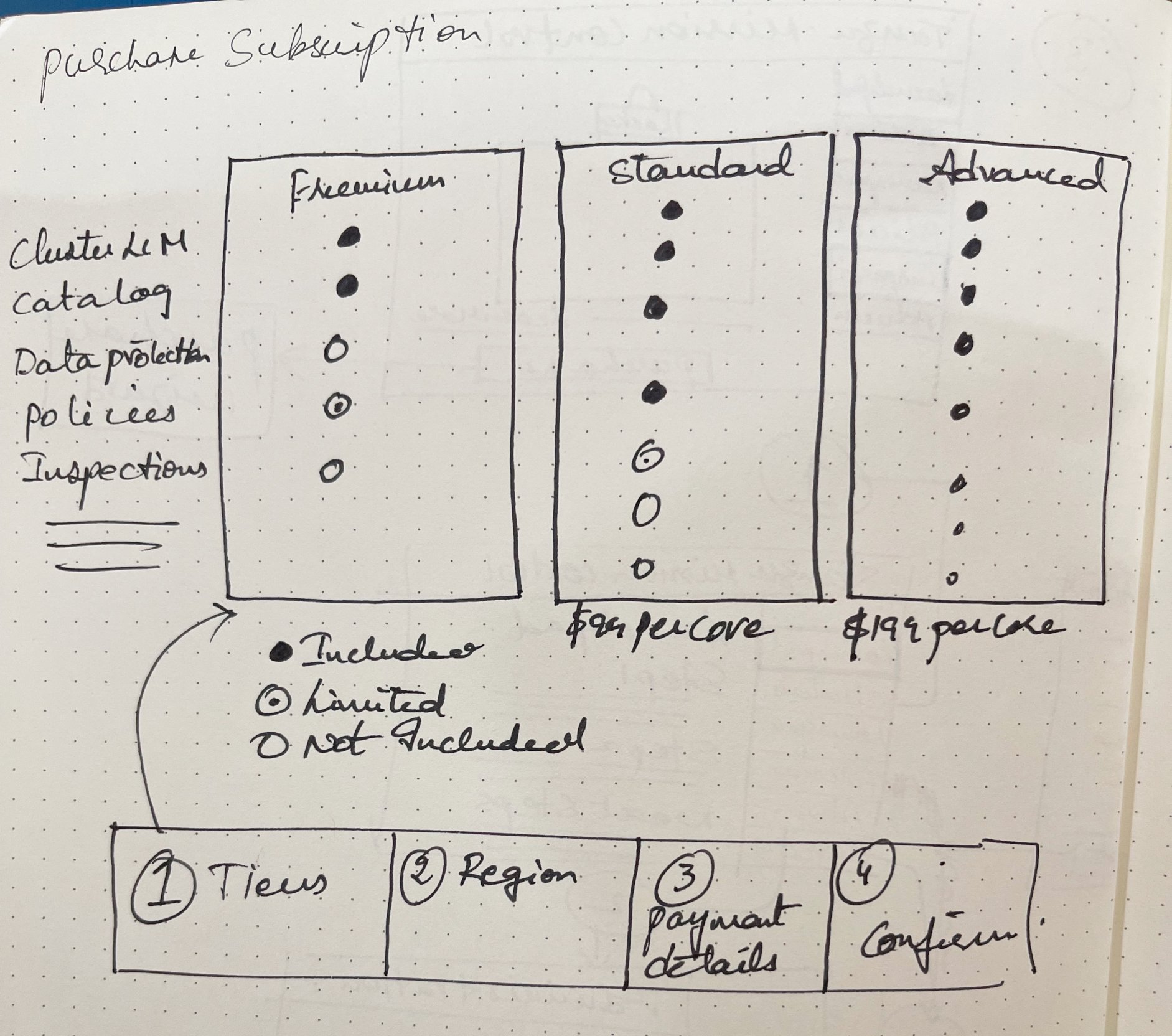VMware Tanzu
VMware Tanzu Mission Control™ is a management platform for consistently operating and securing your Kubernetes infrastructure and modern applications across multiple teams and clouds in enterprise and medium businesses.
Onboarding is a key experience in every SaaS product. We want our customers to understand their costs, test the product, and make that conversation from free to paid customers.
Our business goal is to increase the conversion rates and achieve a monthly retention rate of 90%.
problem statement
For a product-led growth strategy to succeed, we need to develop a design strategy that ensures people sign up, understand what they can achieve with our product, and convert to paid customers.
If a product is so complicated it needs an interpreter, you’re leaving money on the table” - Adam Weinstein
Outcome
Conversion rates increased by 40%.
We were able to garner several small and medium-sized business customers.
USERS
External users who are not customers yet, internal VMWare operators, and current customers and partners with varied levels of experience in Kubernetes management.
MY ROLE
Senior Product Designer and UX Researcher
MY TEAM
Product Manager
Marketing lead
UI Lead
Engineering Manager
process and Strategy
To start with, our go-to-market strategy was to offer a freemium product. Customers are offered basic features for free and are charged for advanced features.
Assumptions Mapping Workshop
I conducted a workshop with the Tanzu cloud services team, the product manager and the engineers to list out the assumptions we wanted to test with our customers.
We needed to show immediate value to our customers.
Test assumptions about what activities customers want to perform on our product
Our customers are either new to K8 management or may be running a few clusters in their platforms.
Customers need ways to experience documentation methodically.
If users want additional business value they will purchase the advanced tier.
Sketching and low-fidelity prototypes
I started sketching my ideas on paper and this helped me visualize several ideas to get feedback and come up with the most viable designs. These sketches addressed the need for consistent experience between the marketing and product screens.
The user flow will touch marketing pages, VMWare account creation, and login pages provided by the central cloud services team as well as the payment and subscription flows.


High Fidelity Mockups
High-fidelity mockups establish a realistic experience for useful stakeholder feedback during design reviews.
Onboarding checklist design
I explored several options for the onboarding checklist experience. I created different versions for both new and experienced users. Our goal was to demonstrate immediate value to our customers.
Subscription and purchase experience
I designed the purchase screens based on our hypothesis around ‘If users want additional business value they will purchase the advanced tier’. When the user is convinced they want to purchase the product, they can go to the subscription and purchase flows.
User flow for onboarding of a new user into TMC.
Evaluative research
Once the high-fidelity screens were designed, I partnered with another product designer to conduct qualitative interviews with 17 participants.
After writing the research plan, I worked with usertesting.com, an external agency, to recruit some of the participants for our studies.
Recruiting criteria - Prospective customers, Internal VMware users, Current customers, and Partners across Medium Businesses and Large Enterprises.
These were the questions to be answered during our studies.
Visualization of our customer journey and insights from usability studies
Final Solution
Changing the SaaS pricing model
Once research showed that the basic offering did not give much value to customers.
We decided to change our pricing strategy from a freemium to a free trial Opt-in model.
This meant customers could use the complete product for a free trial period of 30 days. Once it ends, they could opt in by making a purchase decision.
Before and After screens
#1 improvement
These design changes clarify our product offerings at different tiers and provide cost calculators to easily evaluate costs our customers might incur as they use our product.
#2 Improvement:
Instead of locking them out of the advanced features (which was our initial strategy) we will let our customers interact with all the capabilities we have to offer. This will allow them to make an informed decision and improve trust.
#3 Improvement
Improvements to account creation flow to remove friction for our customers.
Learnings and next steps
Changing the pricing model let to increased engagement and higher conversion rates.
Support different learning styles. Offering onboarding checklists, videos and inline documentation assist users while they explore the product.
Personalize users experience and make recommendations based on user entries.
Offer both UI and CLI support within the product.












